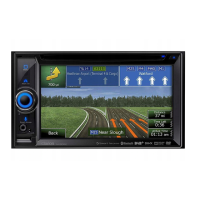2.3.3.6 3D object types
Clarion Mobile Map supports the following 3D object types:
3D terrain map data shows changes in terrain, elevations or depressions in
the land when you view the map in 2D, and use it to plot the route map in
3D when you navigate. Hills and mountains are shown in the background of
the 3D map, and illustrated by colour and shading on the 2D map.
Complex intersections and vertically isolated roads (such as overpasses or
bridges) are displayed in 3D.
3D landmarks Landmarks are 3D artistic or block representations of prominent or well-
known objects.
3D block representation of full city building data containing actual building
size and position on the map.
2.3.3.7 Elements of the active route
Clarion Mobile Map shows the route in the following way:
and Start point
Your current position displayed on the map. If roads ar
near, it is aligned to the nearest road.
Normally if GPS position is available, the route starts from
the current position. If there is no valid GPS position, Clarion
Mobile Map uses the last known position as the start point.
(intermediate
An intermediate destination of the route before reaching the
final destination.
Destination (end
point)
The final destination of the route.
The route always stands out with its colour on the map, both
in daytime and in night colour mode.
that are excluded
from the navigation
You can choose whether you want to use or avoid certain
road types (page 88. However, when Clarion Mobile Map
cannot avoid such roads, the route will include them and it
will show them in a colour that is different from the route
that are affected by
traffic events
Road segments may be affected by traffic events received.
These streets and roads are displayed in an alternate
colour, and small symbols displayed along the route show
the type of the traffic event.
18 NX505E English

